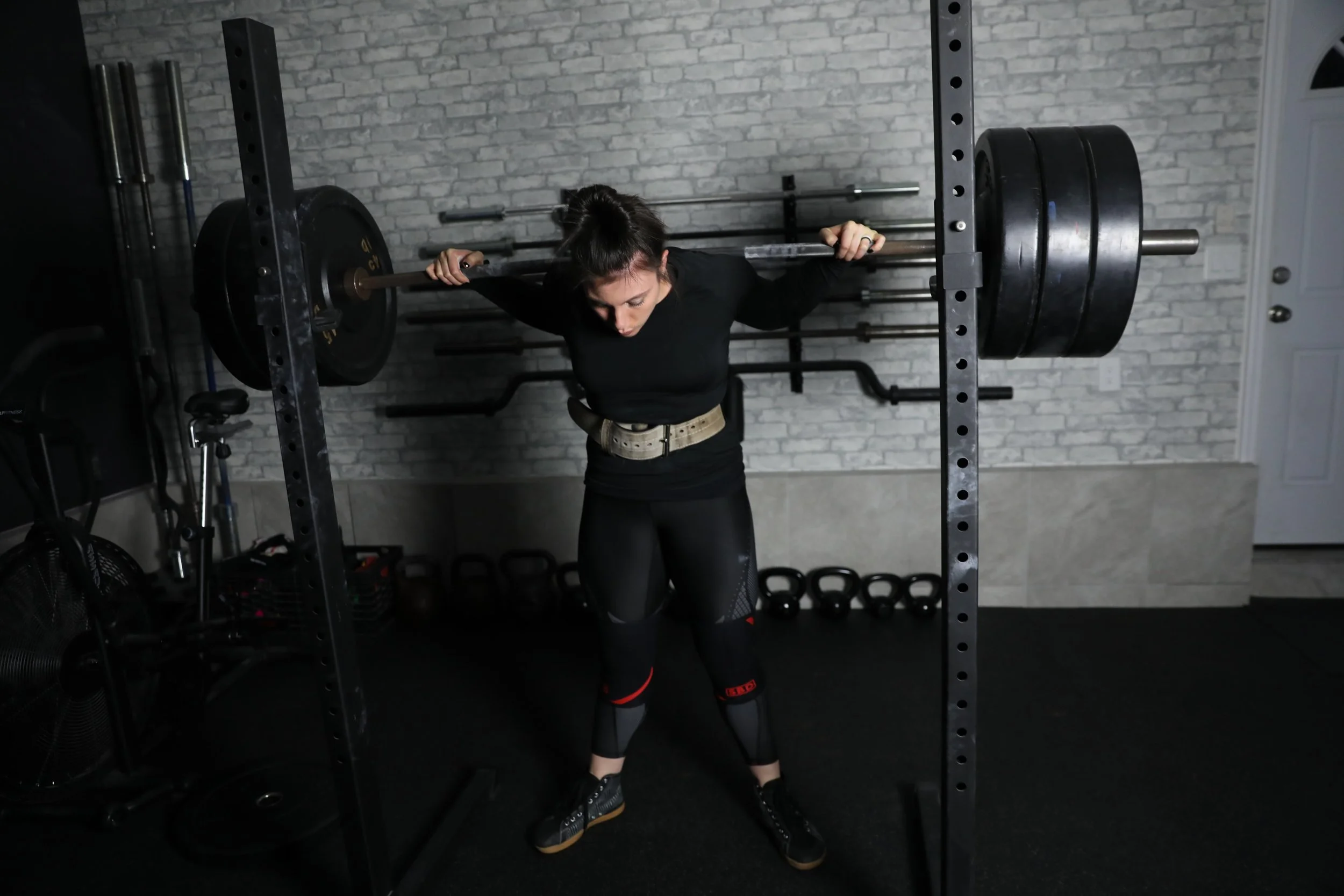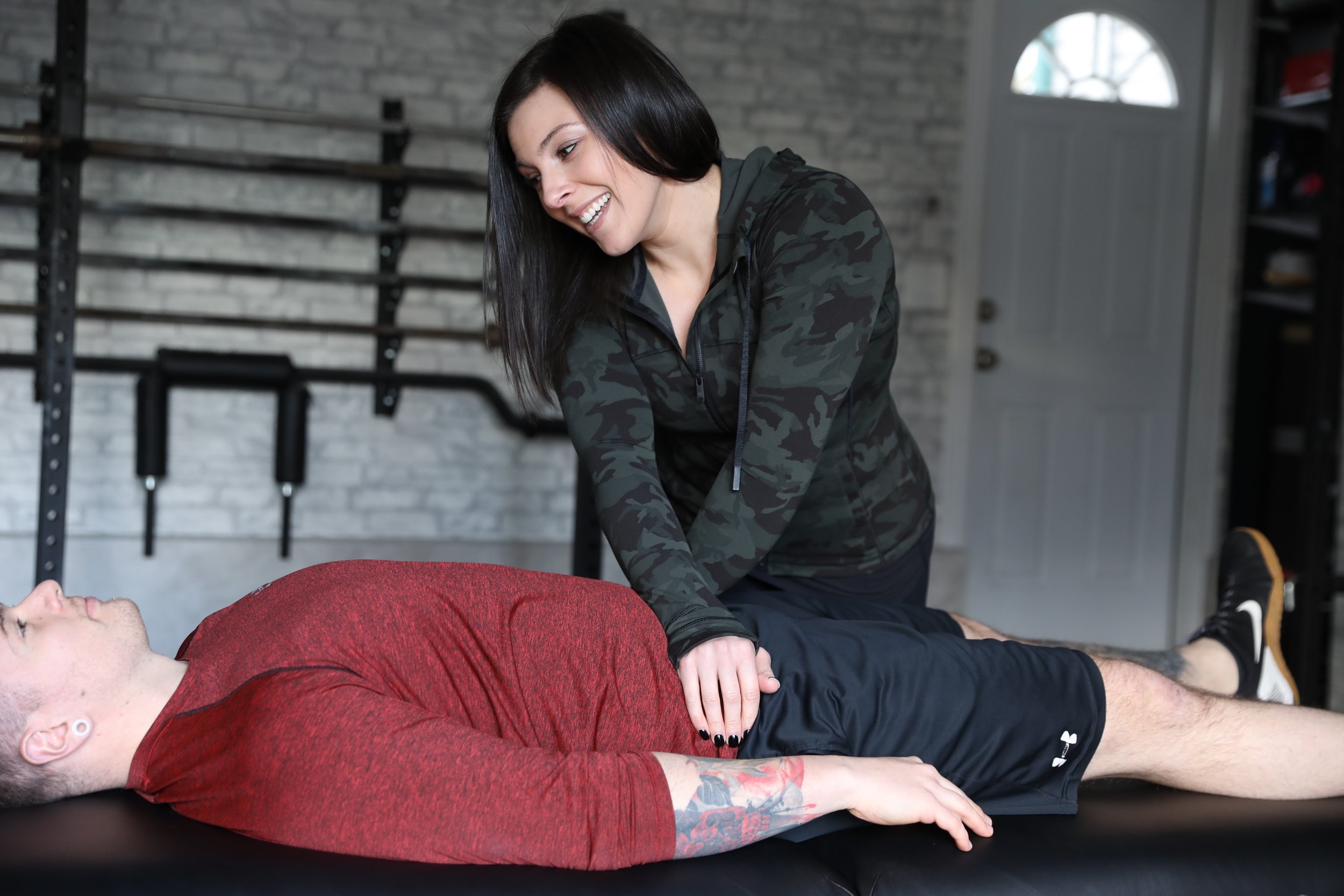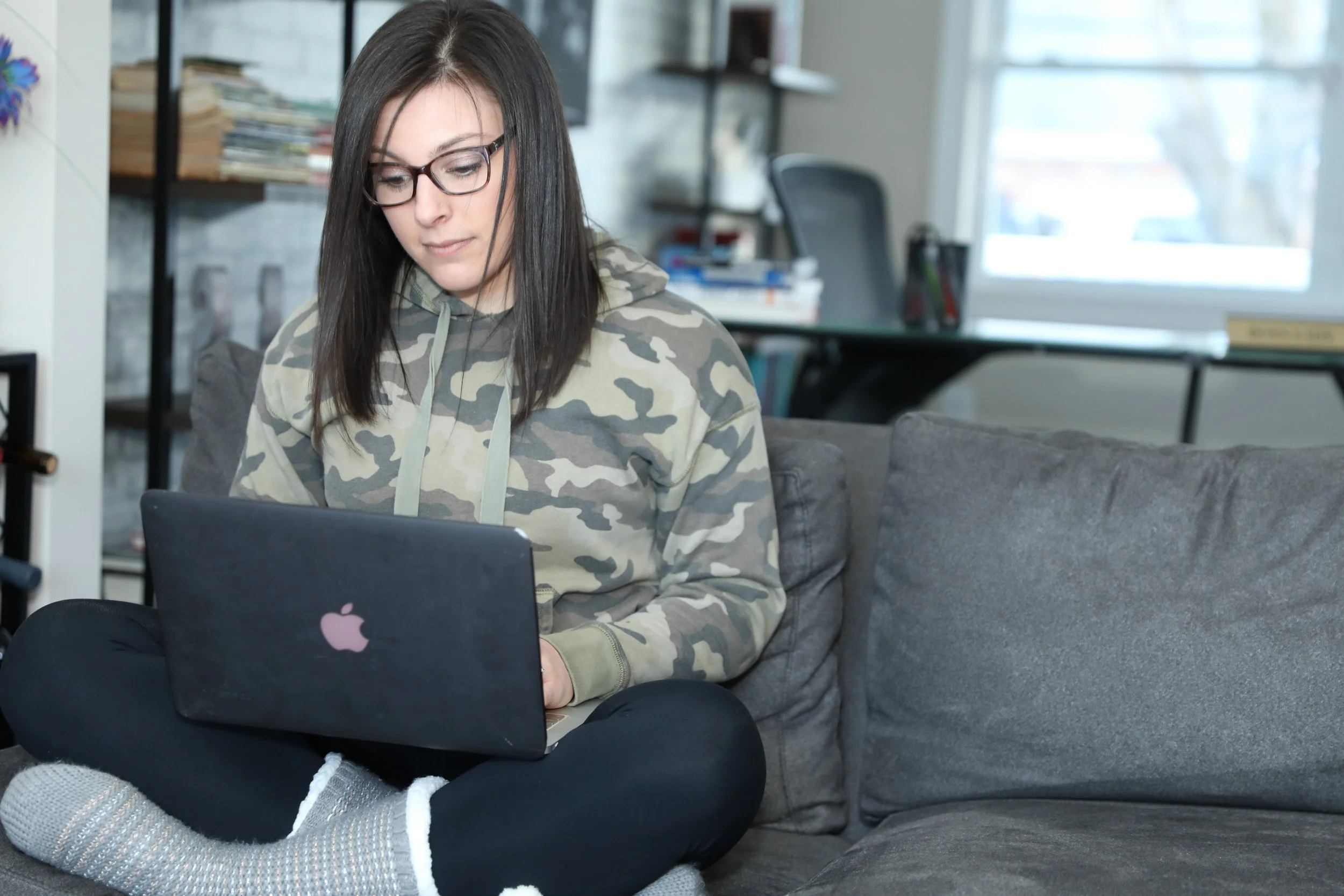I remember our orthopedics and exercise physiology classes in physical therapy school. I was shocked at how little we learned about exercise. We learned about prescribing three sets of ten to fifteen reps and the idea of progressive resistance exercises, or PREs. However, I do NOT remember learning about exercise selection, proper technique, planning, and programming or identifying what loads are appropriate for each client and why. In fact, I remember mainly learning about modalities, manual therapy, passive range of motion, and short-term pain relief versus what leads to long-lasting results, autonomy in symptom management, and improvements in quality of life, sport, and work.
Sure, modalities, manual therapy, and other passive modalities work for short-term pain relief with acute injuries and early post-op rehabilitation, but as physical therapists aren’t we supposed to help people return to functioning in their day-to-day lives, get stronger and take ownership of their body again?
When I started my clinical rotations and entered the field as a licensed clinician I had some big realizations surrounding my beliefs of physical therapy.
My Belief About Physical Therapy:
Physical therapists help people restor what was lost and improve their lives through movement, education, strength, and autonomy in injury management and risk reduction in as little time as possible.
What Standard Physical Therapy Seems To Be:
Physical therapy clinics are pain management and manual therapy mills where people go for short-term relief and instant gratification and the passage of time making their symptoms go away while the clinic milks their insurance company for all it’s worth. The cycle repeats over and over because the clients are reliant on, and believe that, modalities or hands on techniques are what cures them.
The biggest fundamental problems with the state of physical therapy are that we focus too much on:
Pain Management
The isolated area of the body that's injured
What insurance companies think are important and thus will cover
Physical Therapy Problem Number 1: PHYSICAL THERAPISTS DON'T FOLLOW TRAINING PROGRAMS
I was shocked that only my husband (then boyfriend) and a handful of students in our DPT program actually worked out regularly or had any experience with exercise or sports. The truth of the matter is, a majority of physical therapists do not exercise. Furthermore, if they do exercise, most don't follow strength training programs but rather engage in exercise haphazardly with no direction or plan towards an end result. If they don’t have any personal experience with exercise or strength training, should they really be putting their clients or patients on a program and how effective will that program be?
Physical Therapy Solution Number 1: YOU MUST GO TO THE GYM REGULARLY & FOLLOW A TRAINING PROGRAM
No matter what setting they are in, all physical therapists need to go to the gym regularly. Exercising and moving regularly is the most important thing for an educator of human movement to a) not be a hypocrite and b) have a mediocre understanding of physical activity. PTs should follow planned and progressed training programs rather than simply showing up and doing random exercise to be the best outpatient sports physical therapist who can work with any diagnosis.
Additionally, physical therapy is a physically demanding job. In many settings physical therapists are supporting clients and loads that may be relatively heavy. We learn how to guard and transfer patients with “good mechanics” but if we’re working with someone who may be double our body weight or require max assist for a 30-45 minute treatment session, how long will we be able to work if we aren’t strong?
The orthopedic and sports physical therapy profession prides itself on being movement specialists and returning clients to pre-injury or pre-surgical levels of activity, fitness, and sport; however, the physical therapy education system fails to prepare us to do that. Instead, we're taught the phases of rehabilitation for various injuries and surgeries. God forbid a varsity soccer player who is post-op ACL reconstruction lands on your schedule when you’re fresh out of physical therapy school, you've never been taught what exercises to use beyond quad sets, heel slides, bridges, and Russian stim.
Unless you have a sport or exercise background from before physical therapy school, you're not taught how to bridge the gap between phases of rehabilitation and return to the playing field. Because of this, physical therapists are finding more and more athletes, powerlifters, weightlifters, and CrossFitters looking to their CrossFit/Powerlifting coaches, strength and conditioning coaches, and other gurus for their sport-injury rehabilitation and return to sport needs.
I'm grateful every day that I came into physical therapy school with a background in human movement. From my years of dance and gymnastics, becoming a gym rat in high school, and a triathlete in undergraduate school, I was never fearful of working hard and was exposed to free weights and various exercise movements. This certainly gave me an edge when it came to exercise selection, prescription, and progression (more on this later) in school because we literally were not taught anything about exercise except that we'd learn it in our clinical rotations - if we were lucky! And I wasn't so lucky. Having exposure to structured training throughout my life made the creative part of physical therapy a lot easier for me. I could think beyond knee extension, leg curls, and clamshells. I knew what it meant to load more than 3 pounds or light resistance bands, and I had some idea of progressive overload. I remember being shocked that my husband and I (then boyfriend) were two of the five people in our class of 30-something students who went to the gym regularly.
My first clinical experience was at one of those mill-model physical therapy practices. Five treatment tables were lined up against the wall, and there was an array of cut-off latex resistance bands, ankle weights, various exercise balls, and a handful of patients sitting with hot packs and electric stim hooked up to their injured body parts.
On my first day, my clinical instructor introduced herself to me. She shared that she had just started working there 2 weeks prior after being in pediatrics for the past 15 years with limited experience in the outpatient setting. I thought, “gee, that's weird you'd be assigned a student to mentor in orthopedics with minimal experience yourself.” When I introduced myself and shared a bit about my background, I recall her being excited that I'd be able to really "exercise" the patients. Wasn't she supposed to be my mentor? But alas, I just finished my first year in physical therapy school, and I was the student, so who was I to question what was going on?
For the next 8 weeks, I painstakingly watched as most patients received the same isolation exercises with flimsy resistance bands and ankle weights that never progressed while spending most of the time on the table receiving modalities, massage, and passive stretching. I tried my best to implement what I knew about getting people stronger with the available equipment. I was mostly successful, but I couldn't have done that without my prior knowledge of exercise and human movement before and outside physical therapy school.
While I didn't learn much about exercise selection and prescription for physical therapy and rehabilitation from my first clinical instructor, I'm grateful I had the opportunity for independence with some of the more athletic patients we evaluated because of her inexperience and my background. I specifically remember a high school baseball player who came to us after a microdiscectomy. I exclusively worked on progressing his strength and range of motion with the knowledge I had acquired outside of physical therapy school to understand his underlying surgical history and injury. A decade later, this particular client actually reached out to me on Instagram to thank me for being so influential in his life and let me know that he became a collegiate strength and conditioning coach because of our work together.
Physical Therapy Problem Number 2: MEANINGFUL EXERCISE PRESCRIPTION IS NOT TAUGHT IN SCHOOL
More and more evidence in the literature supports that progressive resistance strengthening exceeds modalities and passive treatments with neurological and musculoskeletal injuries. However, a chronic issue in physical therapy is that clinicians underdose their clients, never reaching meaningful load levels to cause significant strength adaptations and significant changes in functional abilities as quickly as possible.
General strength training used in athletics, powerlifting, bodybuilding, and other strength sports is not different from the strengthening in the rehabilitation setting. However, many clinicians may think this is the case. Medical doctors and rehab clinicians who are not educated in the principles of barbell training and progressive overload look at "strength training" as something only non-injured people can do. This is due to a lack of knowledge and understanding of breaking down the principles and applying them to the individual based on their functional ability and medical history.
Physical Therapy Solution Number 2: YOU MUST BECOME EDUCATED ON THE PRINCIPLES OF EXERCISE PRESCRIPTION AS IT RELATES TO THE GENERAL WELL POPULATION AND THEN LEARN HOW TO APPLY IT TO THE CLINICAL SETTING
No matter what setting you're working in as a physical therapist, you need to have a background in strength training, as strength is the basis for every functional goal we are trying to achieve. Whether the goal is to improve balance, reduce pain, return to sport, regain fine motor skills, or improve range of motion, none of this is achievable and maintainable without the strength to move and control our bodies. Unfortunately, physical therapists spend too much time focusing on passive modalities and passive range of motion when we can effectively reduce pain and increase functional range of motion by getting stronger sooner. But meaningful strength training is left out of the physical therapy equation in the early stages and reserved for "return to sport," when it should be incorporated into the rehab process as soon as possible.
The problem with physical therapy school is that there is a missing link. We are not taught the foundations and basics of strength training in the physical therapy curriculum. This is a shame because the foundation of strength training is actually quite simple and applicable to every scenario without variation in the principles. So, for example, instead of reinventing the wheel for every lower extremity issue, starting with two simple movements - the squat and deadlift (or regressed variations thereof) - is the most effective way to strengthen a hip, knee, ankle, foot, back and core, without needing an arsenal of isolation exercises for every joint and muscle in the kinetic chain.
Clinical Examples:
Early on in my physical therapy career, I had the opportunity to work with a client who had bilateral brachial plexus injuries from surgery on his low back. Unfortunately, due to mistakes of his surgical team and poor positioning during a 13-hour surgery, he woke up with a lifelong disability that turned into chronic pain and loss of function in both of his arms. After spending months in inpatient rehab with occupational and physical therapists focusing on pain management, activities of daily living, and functional fine motor tasks, he still had minimal use and strength in his hands, excruciating pain, and loss of general strength and fitness throughout his body.
The main focus of our physical therapy sessions together was general strength and conditioning. Utilizing the safety squat, bench press, overhead press, and Romanian deadlift, this client started to see significant improvement in his general well-being, strength, pain, and function in his hands within a few sessions.
More recently, I began working with a powerlifter about 12 weeks after she had an ACL reconstruction and had not yet regained full extension or flexion in her knee. The physical therapist she worked with focused almost entirely on passive and manual therapies and isometrics. Progressively loading the range of motion she did through closed-chain multi-joint movements (partial range of motion squats and deadlifts) should have begun within the first 4 weeks. This likely would have had a more significant impact on her joint range than the PT trying to crank down on it with her whole body weight.
Fortunately for me, I was surrounded by clinicians who focused on exercises, strength, and a hands-off approach when I graduated from physical therapy school. Fortunately for me, I came from a background in exercise and human movement. And luckily for me, I was introduced to barbell training while I was in physical therapy school.
But many student physical therapists, new clinicians, and seasoned clinicians are not so lucky to have this background or education during their schooling and clinical rotations.
So how can we do better where we're at if we're stuck in a mill-model physical therapy practice without access to proper equipment and education in exercise prescription and progressive overload? How can we keep people coming to physical therapists for rehab instead of leaning on their strength coach or "rehab specialist" who has no license or degree?
Physical Therapists need to be STRENGTH COACHES who walk the walk and talk the talk instead of just physical therapists.
I don't want significant barriers between you and learning the fundamentals of barbell strength training and progressive overload. So, I've created a free customizable program (via Google Sheets) that you can copy as many times as you like and use with every one of your physical therapy (or even coaching) clients. So, grab it here now and then head over to our free Facebook group, where clinical coaches find support, get questions answered, and advance the field together every day!
If you're interested in learning how to optimize barbell technique, maximize strength and muscular development, and reduce injury risk (and peeing) for you, your clients or patients, then join the waitlist to get insider information on all the PRS online courses when they're ready for enrollment!






